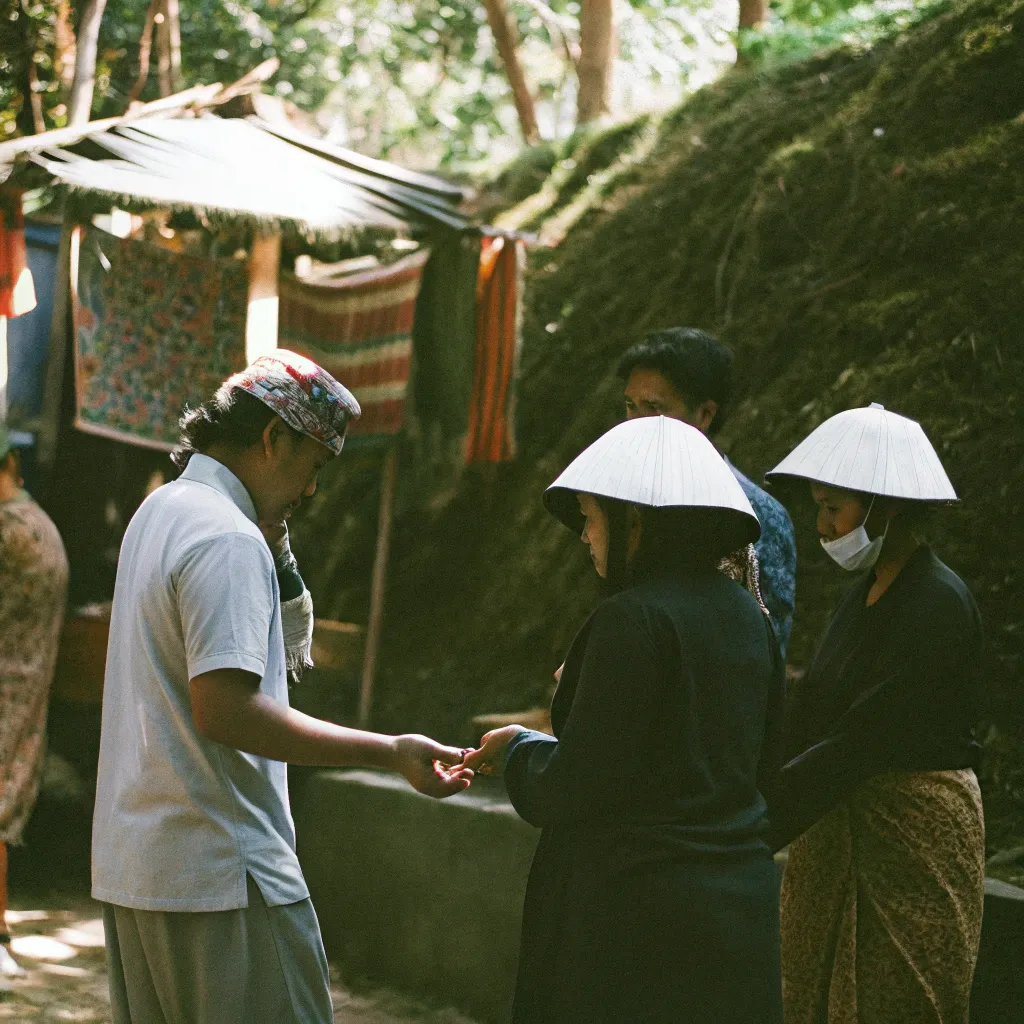When we step into another country, we're not just visiting a place—we're entering someone's home. The difference between being a tourist and a traveler often comes down to how well we respect and adapt to local customs. Having wandered through night markets in Vietnam, participated in traditional ceremonies in Bali, and navigated the complex social rules of Japan, I've learned that cultural respect isn't just polite—it's essential.
Understanding the Importance of Cultural Respect
The concept of cultural respect goes beyond basic manners. It acknowledges that we're temporary guests in established communities with deep-rooted traditions that may differ significantly from our own. When I first traveled to Thailand, I made the rookie mistake of patting a child on the head—a gesture considered disrespectful in Thai culture, as the head is regarded as the most sacred part of the body.
Cultural respect matters for several compelling reasons:
- It demonstrates genuine appreciation for the places we visit
- It creates more meaningful connections with local people
- It helps preserve cultural heritage rather than diluting it
- It reduces friction and potential conflicts during your travels

"Cultural respect isn't optional—it's the entry fee we pay for authentic travel experiences," notes travel anthropologist Sarah Reynolds in her book Crossing Borders, Building Bridges.
The Ripple Effects of Respectful Tourism
Respectful tourism creates a positive cycle. When travelers make efforts to understand local customs, locals often respond with increased openness and hospitality. During my stay in a small village in Morocco, learning just a few Arabic greetings completely transformed how people interacted with me. Suddenly, shopkeepers invited me for tea, families welcomed me into their homes, and I gained insights into Moroccan life that would have otherwise remained hidden.
On the flip side, disrespectful behavior can have lasting negative impacts. The "party tourism" that has plagued destinations like Bali and Barcelona has led to resentment among locals, stricter regulations, and in some cases, anti-tourism sentiment.
Essential Etiquette for Different Regions
Southeast Asian Customs

Southeast Asia presents a fascinating tapestry of cultures with some common threads running through countries like Vietnam, Thailand, and Indonesia.
Vietnam: In Vietnam, the concept of "saving face" is paramount. This means avoiding public criticism or confrontation, even when frustrated. As noted by Vietnam Tourism, public displays of affection should be kept to a minimum. During my time in Hanoi, I noticed that even married couples rarely held hands in public.
When entering Vietnamese homes, always remove your shoes. If invited to a meal, wait to be told where to sit, as seating arrangements often follow hierarchical patterns based on age and status. It's considered polite to leave a small amount of food on your plate when finished, indicating you've had enough.
Bali, Indonesia: The island of Bali follows unique Hindu traditions that differ from the rest of predominantly Muslim Indonesia. According to Bali.com, showing respect for local customs is especially important when visiting temples.
Women shouldn't enter temples during menstruation, and everyone must wear a sarong and sash (usually available for rent or loan at temple entrances). Never sit higher than the offerings or religious objects, and avoid pointing your feet toward sacred areas. I once witnessed a tourist being asked to leave a ceremony because they stepped over offerings placed on the ground—a serious taboo.
Middle Eastern Protocols
Middle Eastern countries often have more conservative social norms that visitors should be particularly mindful of.
Dress codes: In countries like Saudi Arabia, UAE, and Iran, modest dress is expected. For women, this typically means covering shoulders, chest, and knees (and in some contexts, hair). Men should avoid shorts in religious or formal settings. During a visit to Jordan, I packed lightweight, long-sleeved shirts and flowing pants that kept me cool while remaining respectful.
Gender interactions: In more conservative areas, avoid initiating physical contact with the opposite sex, including handshakes. Wait for locals to extend their hand first. Public displays of affection between couples are generally frowned upon.
Ramadan considerations: If traveling during the Islamic holy month of Ramadan, avoid eating, drinking, or smoking in public during daylight hours out of respect for those fasting. Many restaurants will be closed until sunset, though tourist hotels often have designated areas for non-Muslim guests to dine.
European Social Norms
Europe's diverse cultures each have their own nuances, though some general patterns emerge:
Mediterranean timing: In countries like Spain, Italy, and Greece, dinner typically starts much later (often 9-10 PM), and the pace of life may be slower than what North Americans or Northern Europeans are accustomed to. Rushing service or expecting quick meals goes against cultural norms.
Tipping practices: Tipping expectations vary dramatically across Europe. In countries like France and Italy, service is typically included, and additional tips are modest (rounding up or adding 5-10%). In contrast, the UK has tipping customs more similar to North America.
Noise levels: Northern European countries like Finland, Sweden, and Norway generally value quieter public spaces. Loud conversations on public transport or in restaurants may draw disapproving glances. I learned this lesson the hard way on a Helsinki tram when my enthusiastic conversation with a friend earned me several pointed stares.
How Do I Respect Indigenous Cultures While Traveling?
Engaging respectfully with indigenous communities requires special consideration, as these groups have often experienced histories of exploitation and misrepresentation. When visiting places with indigenous populations like Hawaii, Australia, or parts of Latin America, keep these principles in mind:
Seek permission: Never photograph indigenous people without explicit permission. Some communities have spiritual beliefs about photography capturing the soul or spirit. Additionally, many indigenous groups have had their images exploited commercially without consent.
Support authentic indigenous businesses: Choose tours, accommodations, and experiences owned and operated by indigenous people rather than those that appropriate indigenous culture. As the Go Hawaii tourism site emphasizes, cultural mindfulness includes supporting native Hawaiian businesses and practitioners.
Learn proper terminology: Take time to learn how indigenous communities prefer to be addressed. For example, in Canada, terms like First Nations, Métis, and Inuit are used rather than "Indian," while in Australia, Aboriginal and Torres Strait Islander peoples have distinct identities.
Respect sacred sites: Many natural features hold deep spiritual significance for indigenous peoples. Follow guidelines about where you can go and what you can do. At Uluru in Australia, the traditional owners (Anangu people) request that visitors don't climb the rock, though many tourists disregarded this wish until climbing was officially banned in 2019.
During my visit to a Maori community in New Zealand, I was invited to participate in a traditional powhiri (welcome ceremony). Following the protocols exactly as instructed—waiting for certain signals, maintaining appropriate expressions, and participating in the hongi (pressing of noses and foreheads)—demonstrated respect that was clearly appreciated by our hosts.
Practical Tips for Everyday Interactions
Communication Approaches
Even when language barriers exist, how we communicate sends powerful messages about our respect for local culture.
Learn basic phrases: Making the effort to learn even a few words in the local language—hello, thank you, please, excuse me—can transform how you're perceived. In France, beginning any interaction with "Bonjour" before switching to English makes a significant difference in how you'll be treated.
Body language awareness: Pay attention to local customs regarding personal space, eye contact, and gestures. In some Middle Eastern cultures, extended direct eye contact with the opposite sex can be considered inappropriate, while in parts of Latin America, standing at a greater distance during conversation might seem cold or unfriendly.
Volume control: Americans, Australians, and some European travelers are often perceived as too loud in countries where quieter conversation is the norm. I've adjusted my natural speaking volume downward when traveling in Japan and Finland after noticing locals speaking much more softly in public spaces.
Dining Etiquette
Food customs vary dramatically around the world, and mealtime etiquette can be particularly important:
Handling utensils: Be aware of local customs regarding eating implements. In Thailand and Laos, food is typically eaten with a spoon in the right hand and fork in the left (used to push food onto the spoon). In parts of India, Ethiopia, and some Middle Eastern countries, eating with your right hand (never the left) is customary.
Finishing your plate: While Americans are often taught to clean their plates, this isn't universal. In China, finishing everything suggests the host didn't provide enough food, while in India, leaving a small amount indicates you're satisfied.
Alcohol considerations: Be mindful that in some cultures, particularly Muslim-majority countries, alcohol consumption is restricted or prohibited. Even in places where alcohol is common, like South Korea or Russia, there may be specific rituals around pouring drinks or making toasts.
During a home-stay in rural Japan, I watched carefully as my host family navigated dinner rituals—saying "itadakimasu" before eating, never sticking chopsticks upright in rice (which resembles funeral incense), and serving others before themselves. Mirroring these behaviors helped me integrate seamlessly into their household.
Dressing Appropriately for Different Settings
Clothing choices represent one of the most visible ways we show respect for local sensibilities. According to GET Tours, understanding dress codes helps navigate social situations with ease.
Religious Sites
Religious buildings often have the strictest dress requirements:
Mosques: Visitors typically need to remove shoes, and women should cover their hair, arms, and legs. Men should wear long pants. Many major mosques provide appropriate coverings for visitors who arrive unprepared.
Buddhist temples: Shoulders and knees should be covered for all genders. Hats should be removed, and shoes are typically left at the entrance or in designated areas.
Churches and cathedrals: While some European cathedrals have become primarily tourist attractions, many still function as active places of worship. Shoulders should be covered, and in more conservative countries, women may be expected to cover their heads. Shorts and miniskirts are often inappropriate.
I keep a lightweight scarf in my day bag when traveling, which has served multiple purposes—covering my shoulders when unexpectedly encountering a religious site, my head when entering orthodox churches in Eastern Europe, or my face during a sudden sandstorm in Morocco.
Everyday Attire
Even for everyday sightseeing, clothing choices matter:
Beachwear boundaries: In many countries, swimwear is strictly for beaches and pools. Walking around town in a swimsuit or without a shirt (for men) may be considered disrespectful or even result in fines in places like Barcelona and parts of Italy.
Local fashion norms: Observe what locals of your age and gender typically wear. In many European countries, athleisure wear (yoga pants, running shoes) is less common for everyday wear than in North America.
Conservative regions: In parts of North Africa, the Middle East, and some Asian countries, more modest dress is expected even in non-religious settings. Loose, lightweight clothing that covers shoulders, chest, and knees can be both respectful and practical in hot climates.
Digital Etiquette and Photography
The digital age has created new dimensions of travel etiquette, particularly around photography and social media:
Respectful Photography
Permission first: Always ask before photographing people, particularly in cultures where photography may have negative associations or spiritual implications. A smile and gesture toward your camera can transcend language barriers when seeking permission.
Sacred sites: Many religious locations prohibit photography entirely or in certain areas. The Sistine Chapel in Vatican City, many Hindu temples in India, and numerous indigenous sacred sites have strict no-photography policies that should be respected regardless of how tempting the shot might be.
Compensation considerations: In some tourist areas, locals may expect payment for photographs. This creates complex ethical questions—while it can provide income for people in economically disadvantaged areas, it can also commercialize culture in problematic ways. Use your judgment about whether to participate in these exchanges.
Social Media Awareness
Cultural sensitivity: Consider the implications before posting images of religious ceremonies, poverty, or culturally sensitive situations. What might seem like an interesting cultural observation to you could perpetuate stereotypes or violate the dignity of those pictured.
Geolocation ethics: For environmentally or culturally sensitive locations, consider whether geotagging your exact location might contribute to overtourism. Some natural wonders and indigenous sites have been damaged by sudden influxes of visitors seeking Instagram-worthy photos.
Learning from Mistakes
Despite our best efforts, cultural missteps happen. How we respond matters tremendously:
Apologize sincerely: If you realize you've violated a cultural norm, a prompt, genuine apology goes a long way. Most locals understand that visitors make mistakes and appreciate acknowledgment of the error.
Ask for guidance: Locals often appreciate when travelers show interest in doing things correctly. Phrases like "I'm sorry, I'm not familiar with the custom here. Could you please show me the right way?" demonstrate humility and willingness to learn.
Adjust behavior moving forward: The true test of respect is changing your behavior once you understand local expectations. When I accidentally entered a Japanese onsen (hot spring bath) without following proper washing protocols, the attendant gently corrected me. I apologized, retraced my steps, and followed the proper procedure—earning approving nods from the other bathers.
Sustainable Cultural Respect
As noted by Caritas, truly respectful travel extends beyond individual interactions to broader considerations of how tourism impacts communities.
Supporting Local Economies
Buy local: Purchase souvenirs, food, and services from local vendors rather than international chains. This keeps tourism dollars in the community and often provides more authentic experiences.
Fair compensation: Be willing to pay fair prices rather than aggressively bargaining for rock-bottom deals, particularly in economically developing regions. While negotiation is expected in many markets, remember that a few dollars might mean much more to the seller than to you.
Minimizing Cultural Disruption
Observe before participating: When encountering cultural events or ceremonies, take time to observe respectfully before determining whether participation is appropriate. Not every colorful festival or ritual is meant for tourist involvement.
Volume and group size: Travel in smaller groups when possible, and be mindful of noise levels, particularly in residential areas or during religious observances. Large, loud tour groups can disrupt daily life and create resentment.
During a visit to a small fishing village in Portugal, I noticed tourists regularly walking through the narrow residential streets, photographing laundry hanging from balconies and peering into ground-floor windows. Recognizing the invasiveness, I chose to stick to public areas and commercial streets instead.
Final Thoughts
Cultural respect isn't about perfect adherence to every local custom—that would be impossible even for the most seasoned traveler. Rather, it's about approaching each destination with humility, curiosity, and willingness to adapt. The most meaningful travel experiences often come when we step outside our comfort zones and truly engage with different ways of living.
Before my first international trip, a wise traveler told me: "The world is not a museum exhibit created for your entertainment. It's a complex tapestry of living cultures that existed before you arrived and will continue after you leave." This perspective has guided my approach to travel ever since.
By making sincere efforts to respect local customs, we not only enrich our own experiences but also contribute to a more sustainable and mutually beneficial form of tourism. In a world where cross-cultural understanding seems increasingly valuable, respectful travel represents one of the most direct paths to greater global empathy.






